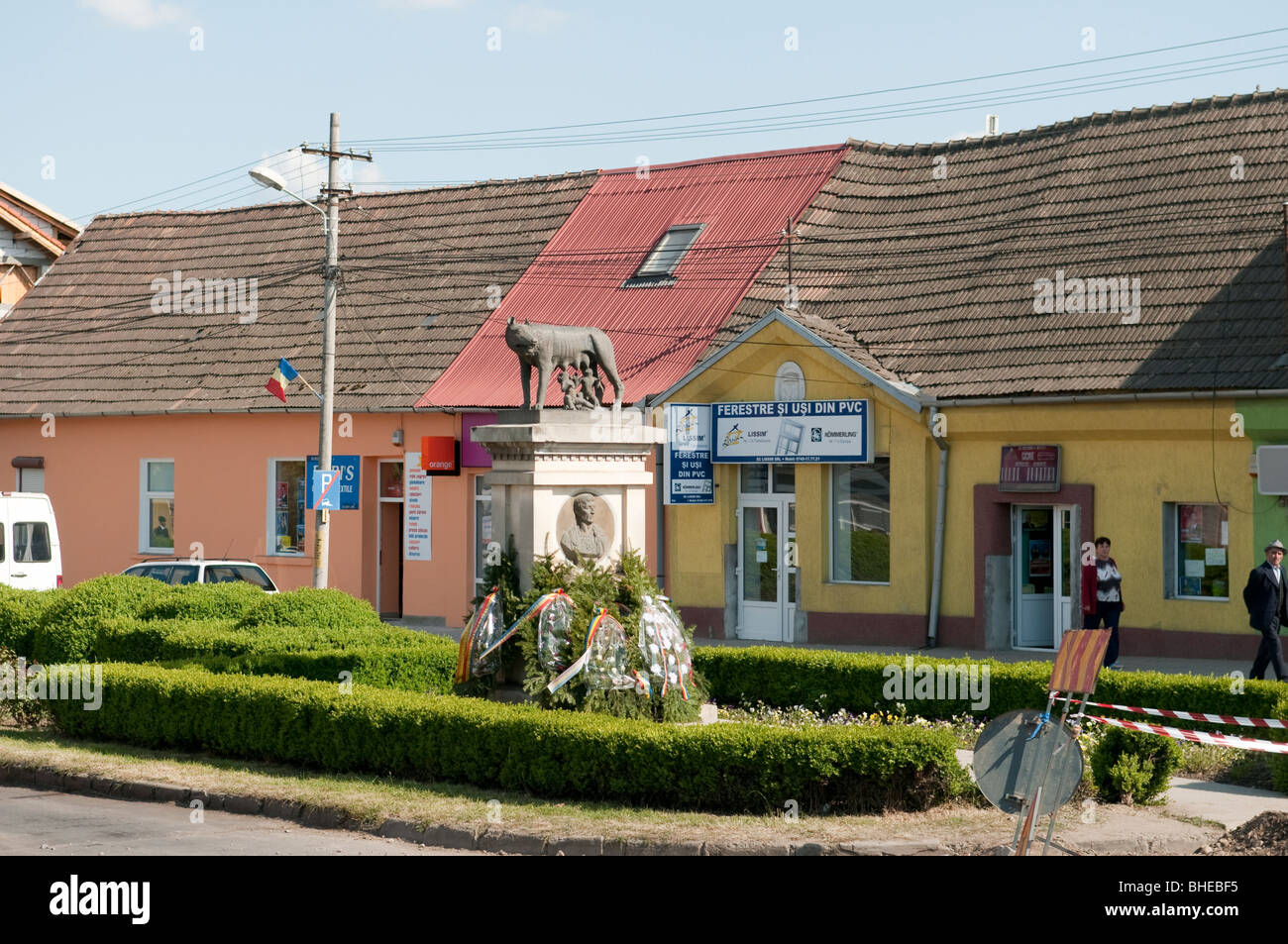Romulus and Remus statue in Ludus Romania Eastern Europe

Image details
Contributor:
GeoPic / Alamy Stock PhotoImage ID:
BHEBF5File size:
51.4 MB (2.7 MB Compressed download)Releases:
Model - no | Property - noDo I need a release?Dimensions:
5200 x 3454 px | 44 x 29.2 cm | 17.3 x 11.5 inches | 300dpiDate taken:
2009Location:
Romania Eastern EuropeMore information:
Romulus and Remus (traditionally c. 771 BC[2]–c. 717 BC and c. 771 BC–c. 753 BC respectively) are the traditional founders of Rome, appearing in Roman mythology as the twin sons of the Vestal Virgin Rhea Silvia, fathered by the god of war, Mars. According to the tradition recorded as history by Plutarch and Livy, Romulus served as the first King of Rome. Romulus wished to build the city of Rome on the Palatine Hill while Remus preferred the Aventine Hill.[3] Both parties agreed that the question should be decided by augury and each took his station on the top of his respective hill. Remus was the first to see six vultures, but soon afterwards Romulus saw twelve vultures. Each claimed the augury in his favor and in the disputes that followed Remus was killed.[4] According to one account, Romulus killed his own brother when he attempted to leap over the wall he had built around the Palatine. In remorse, Romulus fasted until he had appeased the spirit of Remus by instituting the festival of the Lemuria for the souls of the departed.[5] After founding Rome, Romulus not only created the Roman Legions and the Roman Senate, but also added citizens to his new city by abducting the women of the neighboring Sabine tribes, which resulted in the mixture of the Sabines and Romans into one people. Romulus would become one of ancient Rome's greatest conquerors, adding large amounts of territory and people to the dominion of Rome. After his death, Romulus was deified as the god Quirinus, the divine persona of the Roman people. As a mythological figure, his historical basis is disputed, and it is supposed that his name is a back-formation from the name Rome. Some scholars, notably Andrea Carandini, believe in the historicity of Romulus, in part because of the 1988 discovery of the Murus Romuli on the north slope of the Palatine Hill in Rome.[6] Romulus and Remus are pre-eminent among the famous feral children in mythology and fiction.